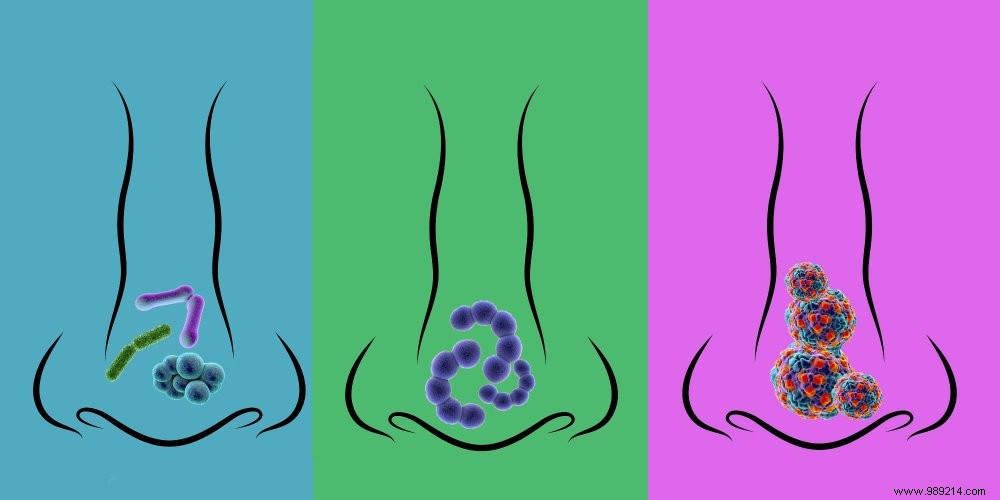 Our nasal cavities, like our intestines or our vagina, harbor a microscopic fauna responsible for fighting against viruses and pathogenic bacteria. It is thus an effective first line of defense to protect us from respiratory infections.
Our nasal cavities, like our intestines or our vagina, harbor a microscopic fauna responsible for fighting against viruses and pathogenic bacteria. It is thus an effective first line of defense to protect us from respiratory infections. Everyone now knows the importance of the intestinal microbiota for the proper functioning of our body, in particular for the strength of our immune system. If it is in great shape, healthy and diverse, our ability to fight general infections is indeed increased. We then discovered the existence of the cutaneous microbiota, essential to the integrity of the skin, that of the oral microbiota which plays a role in oral health and that of the vaginal microbiota, essential to counteract urogenital infections.
And surprise:researchers have recently identified the presence of a specific microbiota on the mucous membranes that line the inside of our nose. Its balance is valuable in preventing and reducing the severity of colds, nasopharyngitis… and even Covid-19.
"The nasal microbiota is all the microorganisms - bacteria, viruses and yeasts - present on the nasal mucosa which goes from the front to the back of the nostril", explains Prof. Geneviève Héry Arnaud, microbiologist at the Brest University Hospital. It includes more than thirty families of different bacteria. Some are present on other mucous membranes of the body, such as the intestine or the skin, while others seem more specific to the nose (Moraxella and Hungatella for example).
This ecosystem changes with age. At birth, Staphylococci and Corynebacteria are quite abundant. But their number decreases over the months to leave more room for Moraxella bacteria, which theoretically become dominant, according to an American study published in 2020 in the scientific journal Pediatrics . Children aged one to two years whose nasal microbiota remains poor in Moraxella are more likely to develop childhood asthma.
Video of the day:"The bacteria in the nasal microbiota exert a barrier effect against influenza viruses (influenzae ) and those of the common cold (rhinovirus )", emphasizes Professor Geneviève Héry Arnaud. They also fight against Staphylococci aureus, which are often resistant to antibiotics. By competing with these microbes, they avoid their colonization in the nasal cavities.
A Belgian study from the University of Antwerp compared the microbiota of the nose of healthy people and that of people suffering from recurrent upper respiratory infections. In healthy subjects, certain protective lactobacteria – Lactobacillus casei – are three times more numerous in the nasal cavities and ten times more numerous at the back of the nose than in subjects with inflammation of the respiratory tract and chronic sinusitis. The abundance of other lactobacilli – Lactobacillus gasseri – is associated with a lower susceptibility to Streptococci.
These discoveries are beginning to revolutionize the management of nasopharyngeal infections. The first treatments capable of rebalancing the nasal flora are arriving on the market (Azeol nasal spray in France and ProbioRinse in Canada and the United States) in order to boost our natural self-defense capacities.
The nose is one of the main entry points for Sars-CoV-2. If it is equipped with a quality microbiota, the symptoms will be less than with an impoverished flora, unable to reduce the viral load, according to American researchers from the University of Augusta. This observation is based on the analysis of the nasal microbiota of many patients with moderate to severe symptoms of Covid-19. But these data must be confirmed on a larger scale before considering a diagnosis of severity or developing an anti-Covid therapy based on the nasal microbiota.
Read also: